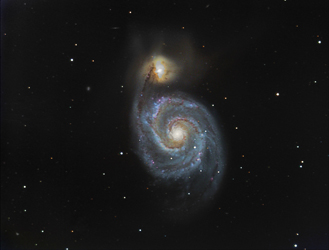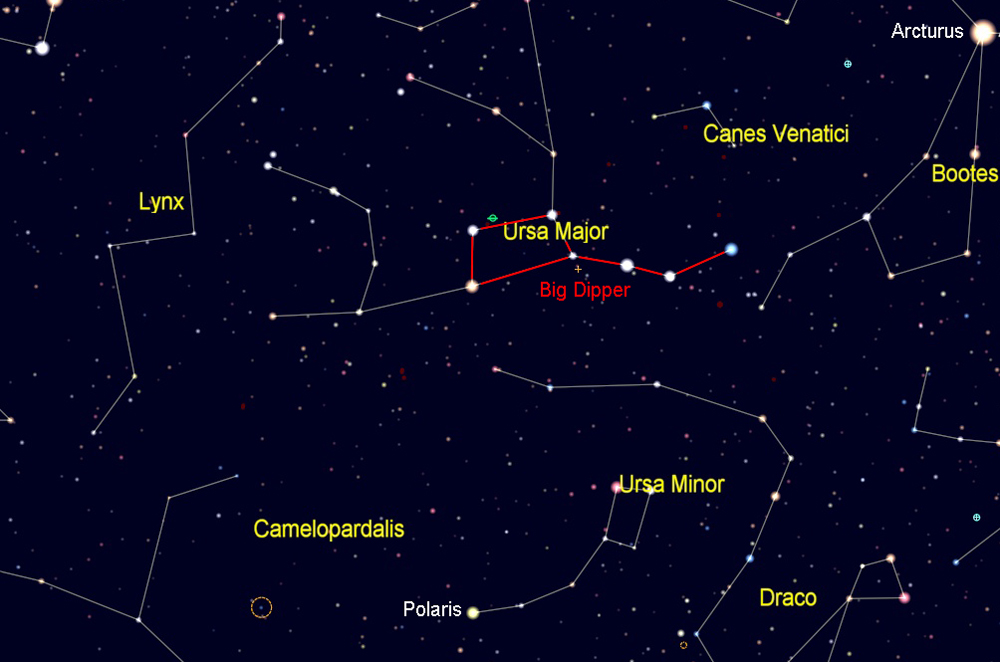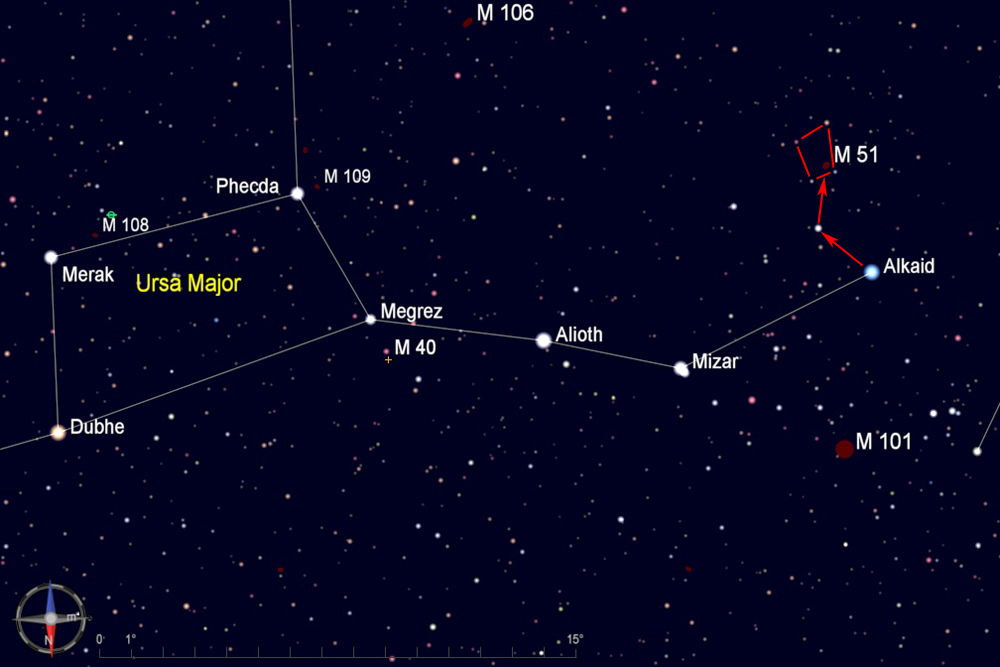| The Whirlpool Galaxy is one of the brightest examples of a face-on spiral galaxy visible in our skies. It is about 23 million light years away. The irregular companion galaxy that appears to be connected to one of the spiral arms is NGC 5195. The companion is actually slightly farther away. The two bright nuclei of these galaxies can be seen in small telescopes, and larger scopes will show nice detail in the Whirlpool's spiral arms. |
 |
| Evening visibility: |
March-September |
| Best viewed with: |
telescope |
| |
Printable chart (pdf) |
View larger image |
Directions:
Start by finding the Big Dipper, one of the most recognizable star patterns in the sky. It is part of the constellation Ursa Major, the big bear. It is shown here upside down, high in the sky above Polaris, which is where it can be found during the evenings in spring and summer. For other seasons and times of night, rotate the chart as needed to match what you see in the northern sky.
|
 |
| Note that north is to the bottom in this chart. Find Alkaid, the star at the end of the Big Dipper's handle. Using binoculars or a finderscope, look 2 degrees to the southeast (below the curve of the Dipper's handle) and you will see a star of magnitude 4.6, the brightest star in the vicinity. Then go another 2 degrees to the south, and you will be at the location of M51. Note in the chart below that M51 is located inside a keystone-shaped asterism of 4 dim stars. I find these stars very helpful in locating M51. Look in a low-power eyepiece for two fuzzy nuclei of the Whirlpool and NGC 5195. Then increase the magnification, take your time, and see how much detail you can observe. |
 |
| Star charts created with Cartes du Ciel |
| |
| |


